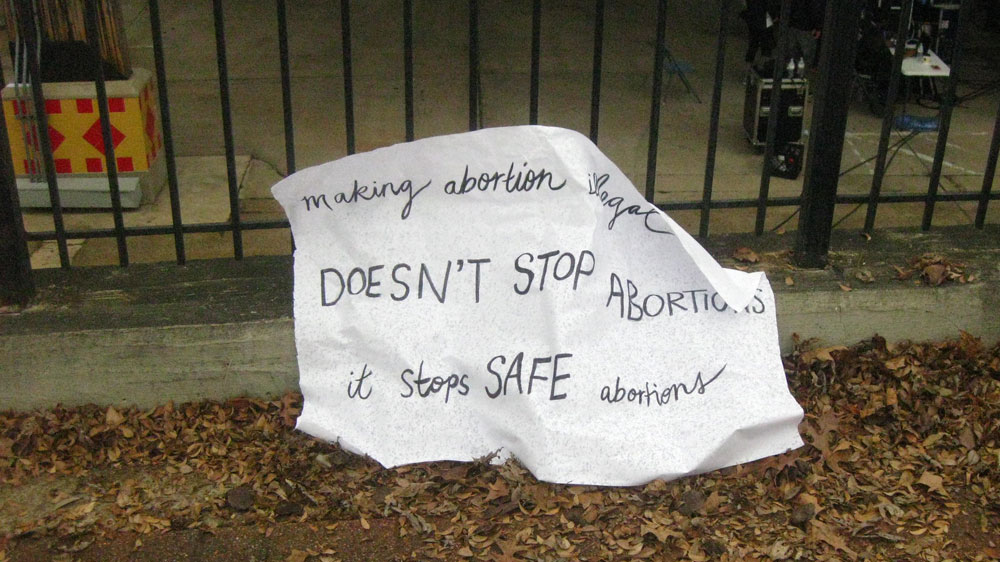
June 29, 2020; NPR, New York Times, and Slate
As large numbers of people watched SCOTUSblog to see their live reporting and blogging on US Supreme Court decisions, one could almost “hear” the holding of collective breath as “It’s June Medical Services” rolled across the screen. And then as, “and it’s written by Breyer” quickly followed, the collective online cheers started!
When a Court decision is written by one of the four liberal justices, that typically means it is at least a 5-to-4 liberal decision, and in the case of June Medical Services v. Russo, it means legal abortion has, once again, survived the scrutiny of the Court. But in this case, it is important to dig into the details.
The case may seem quite straightforward and even a bit repetitive. It mirrors a similar one from Texas, Whole Women’s Health v. Hellerstedt, which required doctors in abortion clinics to have admitting privileges at a hospital within 30 miles of the clinic. The Texas law was found to be unconstitutional in 2016, in a 5-to-3 decision with Justice Anthony Kennedy as the swing vote. But when NPQ wrote about the Louisiana case in March, the verdict was a toss-up. No one was sure which way the Court would swing, but everyone knew that the swing vote would be Chief Justice John Roberts—and that the issue for him would be his position not on abortion, but on precedence.
For the liberals on the court, the matter was very clear. Louisiana, like Texas, had created another TRAP law (Targeted Restriction on Abortion Providers) to make it more difficult to provide abortions and, thus, drive clinics out of business. Writing for the majority, Justice Stephen Breyer wrote that the Louisiana law “would place substantial obstacles in the path of women seeking an abortion” in the state, that it offers “no significant health-related benefits” and that the law “consequently imposes an ‘undue burden’ on a woman’s constitutional right to choose to have an abortion,” and therefore violates the Constitution. He was joined in his opinion by Justices Ruth Bader Ginsburg, Elena Kagan, and Sonia Sotomayor.
Even though the Court had ruled this unconstitutional, there were now two new justices on the court, and both are anti-choice. It was likely they would stand with Louisiana in their arguments that they were protecting the health and safety of the patients (both mothers and possible new lives). The time seemed right. Louisiana’s gamble proved correct. All five conservative justices wrote briefs outlining their positions. Four of them were positions of dissent. One was a position of lament.
For Justice Clarence Thomas, the issue was clearly one of overturning abortion rights. He writes, in his own dissent, “Our abortion precedents are grievously wrong and should be overruled,” and that the high court has “neither jurisdiction nor constitutional authority to declare Louisiana’s duly enacted law unconstitutional.” Writing separately, Justice Samuel Alito referenced both the Texas and Louisiana decisions as the court becoming a bulldozer to “flatten legal rules that stand in the way.” Not to be left out, both Justices Neil Gorsuch and Brent Kavanaugh also wrote separate dissenting opinions in this case.
Sign up for our free newsletters
Subscribe to NPQ's newsletters to have our top stories delivered directly to your inbox.
By signing up, you agree to our privacy policy and terms of use, and to receive messages from NPQ and our partners.
But the opinion coming from the Chief Justice was not one of dissent. It was a separate concurring opinion with the majority on their opinion concerning only one aspect of the law: precedence. In his opinion, Roberts the groundwork for the future and possible overturning of Planned Parenthood v. Casey, the case that reaffirmed Roe and established that restrictions on pre-viability abortions violate the Constitution if they impose “undue burden” or “substantial obstacle.”
That would be the case that Roberts is waiting for. He did not join Breyer’s opinion in this case, but rather, wrote his own, very narrow one that concurred. His opinion is controlled by the Texas decision of four years ago and “principles of stare decisis,” therefore it was unconstitutional from the get-go. Unless he could see a clear error that would not cause a burden (like closing clinics), which he could not, he was unable to stand with his fellow conservatives. Not this time.
The “a-ha” moment for Roberts comes, according to Mark Joseph Stern, writing for Slate, in his interpretation of the extent of what is burdensome. Roberts writes, “There is no plausible sense in which anyone, let alone this Court, could objectively assign weight to such imponderable values as ‘the potentiality of human life’ and a woman’s “own concept of existence.” And as Stern points out, Roberts limits the Court to the Casey standard of an “undue burden” but does not allow them to consider what are the benefits (or lack of benefits) in making that determination.
What this means is that at some future date, a state could impose a two-week waiting period with three extra visits for “indoctrination” about fetal rights. Under Breyer’s interpretation, this would be unconstitutional, but not necessarily so under Roberts. It might be difficult for a woman, but not totally undoable.
It should be noted that Roberts states clearly that he “joined the dissent in Whole Woman’s Health and continue to believe that the case was wrongly decided.” He then points out that no party in June Medical “has asked us to reassess the constitutional validity” of Casey.
It seems that the gauntlet has been thrown down, and the Chief Justice is waiting for someone to pick it up. June Medical Services was obviously not the right case. So in the midst of celebrating this “victory for reproductive choice,” we should remember that danger might lurk around the next corner.—Carole Levine











